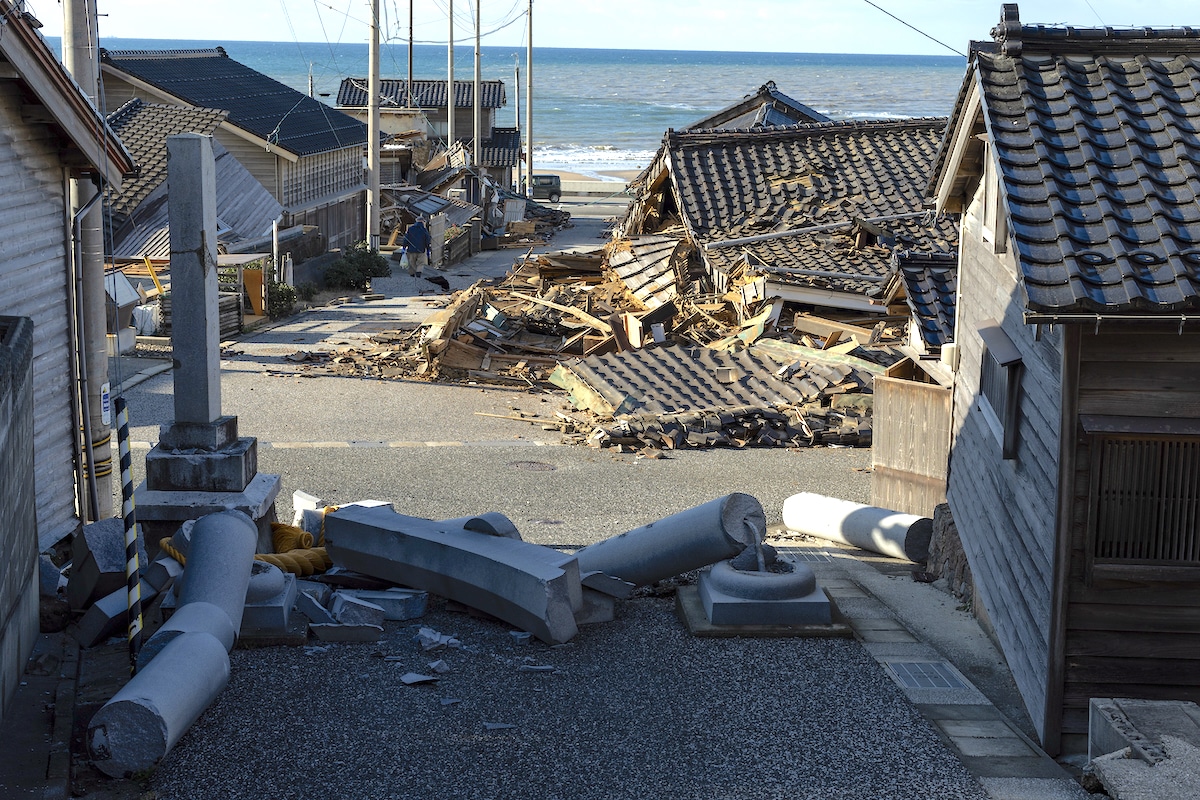Japan Earthquake Kills at Least 55, Displaces Thousands as Rescue Efforts Continue

 Why you can trust us
Why you can trust us
Founded in 2005 as an Ohio-based environmental newspaper, EcoWatch is a digital platform dedicated to publishing quality, science-based content on environmental issues, causes, and solutions.
A 7.6-magnitude earthquake that struck Japan’s Noto Peninsula on New Year’s Day has killed at least 55 people, reported Reuters.
Freezing temperatures were making the efforts of approximately 3,000 rescuers to reach people trapped beneath demolished buildings in isolated coastal areas more difficult.
Japan’s Prime Minister Fumio Kishida said access to the secluded northern portion of the peninsula had been cut off by a destroyed road, CNN reported.
“To secure the route there, we are to mobilize all the means of transport, not only on the ground but also by aerial and marine transport. We have been making an effort to transfer goods, supplies and personnel there since the last night,” Kishida said, as reported by CNN.
Helicopters carrying officials surveyed the peninsula and reported landslides, fires and damaged roads, buildings and infrastructure, according to Kishida.
Masuhiro Izumiya, the mayor of Suzu — a town of about 5,000 households near the epicenter of the earthquake — said about 5,000 households may have been demolished, Reuters reported.
“The situation is catastrophic,” Izumiya said, as reported by Reuters.
According to the country’s meteorological agency, approximately 200 tremors have been felt since the quake first hit.
“The government has deployed emergency rescue teams from the Self-Defence Forces, police and fire departments to the area and is doing its utmost to save lives and rescue victims and survivors, but we have received reports that there are still many people waiting to be rescued under collapsed buildings,” Kishida said, as Reuters reported.
Japan sits on the western part of the “Ring of Fire” — a string of sites of seismic activity and volcanoes partially surrounding the Pacific Basin. The tectonic belt produces roughly 20 percent of the planet’s earthquakes that are a magnitude six or stronger, with as many as 2,000 earthquakes each year that can be felt.
The quake is the deadliest in the country since 2016, authorities said.
Many flights and rail schedules have been suspended in the area. The airport in Noto was closed because of terminal building damage and cracks in its access road and runway.
Water, food and blankets were being handed out by the Japanese military to those who were forced to evacuate, reported the BBC.
About 100,000 were ordered to leave their homes Monday night, but nearly half had returned the following day after tsunami warnings were lifted, Reuters reported.
Approximately 33,000 households in Ishikawa prefecture still did not have power after a night of below-freezing temperatures, and more than 100,000 households had no water.
Aftershocks were being felt on Monday and Tuesday, and Yoshimasa Hayashi, the country’s chief cabinet secretary, warned residents to look out for further quakes “of an intensity of up to 7” during the next week, as reported by the BBC.
On Tuesday, authorities in several cities were rescuing people from buildings that had collapsed, as well as battling fires that had sprung up as a result of the quake, Reuters reported.
“I’ve never experienced a quake that powerful,” said 71-year-old Shoichi Kobayashi, a resident of Wajima, another city on the Noto Peninsula that was hit particularly badly, as reported by Reuters.
Subscribe to get exclusive updates in our daily newsletter!
By signing up, you agree to the Terms of Use and Privacy Policy & to receive electronic communications from EcoWatch Media Group, which may include marketing promotions, advertisements and sponsored content.

 233k
233k  41k
41k  Subscribe
Subscribe 




